Orthodontic treatment for crowded teeth in children
- PMID: 34970995
- PMCID: PMC8786262
- DOI: 10.1002/14651858.CD003453.pub2
Orthodontic treatment for crowded teeth in children
Abstract
Background: Crowded teeth develop when there is not enough space in the jaws into which the teeth can erupt. Crowding can affect baby teeth (deciduous dentititon), adult teeth (permanent dentition), or both, and is a common reason for referral to an orthodontist. Crowded teeth can affect a child's self-esteem and quality of life. Early loss of baby teeth as a result of tooth decay or trauma, can lead to crowded permanent teeth. Crowding tends to increase with age, especially in the lower jaw.
Objectives: To assess the effects of orthodontic intervention for preventing or correcting crowded teeth in children. To test the null hypothesis that there are no differences in outcomes between different orthodontic interventions for preventing or correcting crowded teeth in children.
Search methods: Cochrane Oral Health's Information Specialist searched four bibliographic databases up to 11 January 2021 and used additional search methods to identify published, unpublished and ongoing studies.
Selection criteria: We included randomised controlled trials (RCTs) that evaluated any active interventions to prevent or correct dental crowding in children and adolescents, such as orthodontic braces or extractions, compared to no or delayed treatment, placebo treatment or another active intervention. The studies had to include at least 80% of participants aged 16 years and under.
Data collection and analysis: Two review authors, independently and in duplicate, extracted information regarding methods, participants, interventions, outcomes, harms and results. We resolved any disagreements by liaising with a third review author. We used the Cochrane risk of bias tool to assess the risk of bias in the studies. We calculated mean differences (MDs) with 95% confidence intervals (CI) for continuous data and odds ratios (ORs) with 95% CIs for dichotomous data. We undertook meta-analysis when studies of similar comparisons reported comparable outcome measures, using the random-effects model. We used the I2 statistic as a measure of statistical heterogeneity.
Main results: Our search identified 24 RCTs that included 1512 participants, 1314 of whom were included in analyses. We assessed 23 studies as being at high risk of bias and one as unclear. The studies investigated 17 comparisons. Twenty studies evaluated fixed appliances and auxiliaries (lower lingual arch, lower lip bumper, brackets, archwires, lacebacks, headgear and adjunctive vibrational appliances); two studies evaluated removable appliances and auxiliaries (Schwarz appliance, eruption guidance appliance); and two studies evaluated dental extractions (lower deciduous canines or third molars). The evidence should be interpreted cautiously as it is of very low certainty. Most interventions were evaluated by a single study. Fixed appliances and auxiliaries One study found that use of a lip bumper may reduce crowding in the early permanent dentition (MD -4.39 mm, 95% CI -5.07 to -3.71; 34 participants). One study evaluated lower lingual arch but did not measure amount of crowding. One study concluded that coaxial nickel-titanium (NiTi) archwires may cause more tooth movement in the lower arch than single-stranded NiTi archwires (MD 6.77 mm, 95% CI 5.55 to 7.99; 24 participants). Another study, comparing copper NiTi versus NiTi archwires, found NiTi to be more effective for reducing crowding (MD 0.49 mm, 95% CI 0.35 to 0.63, 66 participants). Single studies did not show evidence of one type of archwire being better than another for Titinol versus Nitinol; nickel-titanium versus stainless steel or multistrand stainless steel; and multistranded stainless steel versus stainless steel. Nor did single studies find evidence of a difference in amount of crowding between self-ligating and conventional brackets, active and passive self-ligating brackets, lacebacks added to fixed appliances versus fixed appliances alone, or cervical pull headgear versus minor interceptive procedures. Meta-analysis of two studies showed no evidence that adding vibrational appliances to fixed appliances reduces crowding at 8 to 10 weeks (MD 0.24 mm, 95% CI -0.81 to 1.30; 119 participants). Removable appliances and auxiliaries One study found use of the Schwarz appliance may be effective at treating dental crowding in the lower arch (MD -2.14 mm, 95% CI -2.79 to -1.49; 28 participants). Another study found an eruption guidance appliance may reduce the number of children with crowded teeth after one year of treatment (OR 0.19, 95% CI 0.05 to 0.68; 46 participants); however, this may have been due to an increase in lower incisor proclination in the treated group. Whether these gains were maintained in the longer term was not assessed. Dental extractions One study found that extracting children's lower deciduous canines had more effect on crowding after one year than no treatment (MD -4.76 mm, 95 CI -6.24 to -3.28; 83 participants), but this was alongside a reduction in arch length. One study found that extracting wisdom teeth did not seem to reduce crowding any more than leaving them in the mouth (MD -0.30 mm, 95% CI -1.30 to 0.70; 77 participants).
Authors' conclusions: Most interventions were assessed by single, small studies. We found very low-certainty evidence that lip bumper, used in the mixed dentition, may be effective for preventing crowding in the early permanent dentition, and a Schwarz appliance may reduce crowding in the lower arch. We also found very low-certainty evidence that coaxial NiTi may be better at reducing crowding than single-stranded NiTi, and that NiTi may be better than copper NiTi. As the current evidence is of very low certainty, our findings may change with future research.
Copyright © 2021 The Cochrane Collaboration. Published by John Wiley & Sons, Ltd.
Conflict of interest statement
Sarah Turner: none known Jayne E Harrison: none known. I am an Editor with Cochrane Oral Health Fyeza NJ Sharif: none known Darren Owens: none known Declan T Millett: none known
Figures
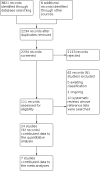

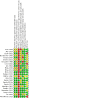

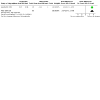

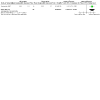
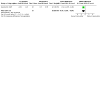

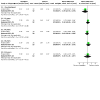







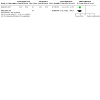
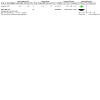
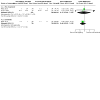
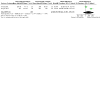


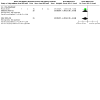

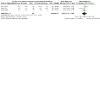






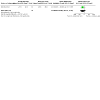


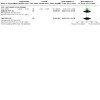

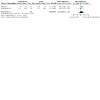
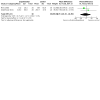

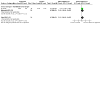

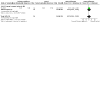
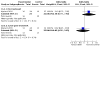
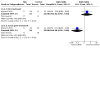




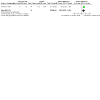
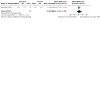
Update of
- doi: 10.1002/14651858.CD003453
References
References to studies included in this review
Aras 2018 {published data only}
-
- Aras I, Unal I, Huniler G, Aras A. Root resorption due to orthodontic treatment using self-ligating and conventional brackets. Journal of Orofacial Orthopedics 2018;79(3):181-90. - PubMed
Atik 2014 {published data only}
Aydin 2018 {published data only}
-
- Aydin B, Senisik NE, Koskan O. Evaluation of the alignment efficiency of nickel-titanium and copper-nickel-titanium archwires in patients undergoing orthodontic treatment over a 12-week period: a single-center, randomized controlled clinical trial. Korean Journal of Orthodontics 2018;48(3):153-62. - PMC - PubMed
Davidovitch 1997 {published data only}
-
- Davidovitch M, McInnis D, Lindauer SJ. The effects of lip bumper therapy in the mixed dentition. American Journal of Orthodontics and Dentofacial Orthopedics 1997;111(1):52-8. - PubMed
Finland 2004 {published and unpublished data}
-
- Hadler-Olsen S, Pirttiniemi P, Kerosuo H, Sjögren A, Pesonen P, Julku J, et al. Does headgear treatment in young children affect the maxillary canine eruption path? European Journal of Orthodontics 2018;40(6):583-91. - PubMed
-
- Krusinskiene V, Kiuttu P, Julku J, Silvola AS, Kantomaa T, Pirttiniemi P. A randomized controlled study of early headgear treatment on occlusal stability--a 13 year follow-up. European Journal of Orthodontics 2008;30(4):418-24. - PubMed
-
- Mantysaari R, Kantomaa T, Pirttiniemi P, Pykalainen A. The effects of early headgear treatment on dental arches and craniofacial morphology: a report of a 2 year randomized study. European Journal of Orthodontics 2004;26(1):59-64. - PubMed
-
- Pirttiniemi P, Kantomaa T, Mantysaari R, Pykalainen A, Krusinskiene V, Laitala T, et al. The effects of early headgear treatment on dental arches and craniofacial morphology: an 8 year report of a randomized study. European Journal of Orthodontics 2005;27(5):429-36. - PubMed
Gravina 2013 {published data only}
-
- Gravina MA, Brunharo IH, Fraga MR, Artese F, Campos MJ, Vitral RW, et al. Clinical evaluation of dental alignment and leveling with three different types of orthodontic wires. Dental Press Journal of Orthodontics 2013;18(6):31-7. - PubMed
-
- Quintão CC, Jones ML, Menezes LM, Koo D, Elias CN. A prospective clinical trial to compare the performance of four initial orthodontic archwires. Korean Journal of Orthodontics 2005;35(5):381-7.
Harradine 1998 {published data only}
-
- Harradine N, Pearson M, Toth B. The effect of extraction of third molars on late lower incisor crowding: a randomized controlled trial. British Journal of Orthodontics 1998;25:117-22. - PubMed
Irvine 2004 {published data only}
-
- Irvine R, Power S, McDonald F. The effectiveness of laceback ligatures: a randomized controlled clinical trial. Journal of Orthodontics 2004;31(4):303-11. - PubMed
Kau 2004 {published data only}
-
- Kau CH, Durning P, Richmond S, Miotti FA, Harzer W. Extractions as a form of interception in the developing dentition: a randomized controlled trial. Journal of Orthodontics 2004;31(2):107-14. - PubMed
Miles 2010 {published data only}
-
- Miles P, Weyant R. Porcelain brackets during initial alignment: are self-ligating cosmetic brackets more efficient? Australian Orthodontic Journal 2010;26(1):21-6. - PubMed
Miles 2012 {published data only}
-
- Miles P, Smith H, Weyant R, Rinchuse DJ. The effects of a vibrational appliance on tooth movement and patient discomfort: a prospective randomised clinical trial. Australian Orthodontic Journal 2012;28(2):213-8. - PubMed
Miles 2016 {published data only}
-
- Miles P, Fisher E. Assessment of the changes in arch perimeter and irregularity in the mandibular arch during initial alignment with the AcceleDent Aura appliance vs no appliance in adolescents: a single-blind randomized clinical trial. American Journal of Orthodontics and Dentofacial Orthopedics 2016;150(6):928-36. - PubMed
-
- Miles P. Does microvibration accelerate leveling and alignment? A randomized controlled trial. Journal of Clinical Orthodontics 2018;52(6-7):342-5. - PubMed
Myrlund 2015 {published data only}
-
- Myrlund R, Dubland M, Keski-Nisula K, Kerosuo H. One year treatment effects of the eruption guidance appliance in 7- to 8-year-old children: a randomized clinical trial. European Journal of Orthodontics 2015;37(2):128-34. - PubMed
O'Brien 1990 {published data only}
-
- O'Brien K, Lewis D, Shaw W, Combe E. A clinical trial of aligning archwires. European Journal of Orthodontics 1990;12:380-4. - PubMed
Ong 2011 {published data only}
-
- Ong E, Ho C, Miles P. Alignment efficiency and discomfort of three orthodontic archwire sequences: a randomized clinical trial. Journal of Orthodontics 2011;38:32-9. - PubMed
Pandis 2009 {published and unpublished data}
-
- Pandis N, Polychronopoulou A, Eliades T. Alleviation of mandibular anterior crowding with copper-nickel-titanium vs nickel-titanium wires: a double-blind randomized control trial. American Journal of Orthodontics and Dentofacial Orthopedics 2009;136(2):152.e1-7. - PubMed
Pandis 2010a {published data only}
-
- Pandis N, Polychronopoulou A, Eliades T. Active or passive self-ligating brackets? A randomized controlled trial of comparative efficiency in resolving maxillary anterior crowding in adolescents. American Journal of Orthodontics & Dentofacial Orthopedics 2010;137(1):12.e1-6; discussion 12-3. - PubMed
Pandis 2011 {published data only}
-
- Pandis N, Polychronopoulou A, Katsaros C, Eliades T. Comparative assessment of conventional and self-ligating appliances on the effect of mandibular intermolar distance in adolescent non-extraction patients: a single-center randomized controlled trial. American Journal of Orthodontics and Dentofacial Orthopaedics 2011;140(3):99-105. - PubMed
Rebellato 1997 {published data only}
-
- Rebellato J, Lindauer SJ, Rubenstein LK, Isaacson RJ, Davidovitch M, Vroom K. Lower arch perimeter preservation using the lingual arch. American Journal of Orthodontics and Dentofacial Orthopedics 1997;112(4):449-56. - PubMed
Sandhu 2013 {published data only}
Sebastian 2012 {published data only}
Songra 2014 {published and unpublished data}
-
- Songra G, Clover M, Atack NE, Ewings P, Sherriff M, Sandy JR, et al. Comparative assessment of alignment efficiency and space closure of active and passive self-ligating vs conventional appliances in adolescents: a single-center randomized controlled trial. American Journal of Orthodontics and Dentofacial Orthopedics 2014;145(5):569-78. [DOI: 10.1016/j.ajodo.2013.12.024] [PMID: ] - DOI - PubMed
Tai 2010 {published data only}
-
- Tai K, Hotokezaka H, Park JH, Tai H, Miyajima K, Choi M, et al. Preliminary cone-beam computed tomography study evaluating dental and skeletal changes after treatment with a mandibular Schwarz appliance. American Journal of Orthodontics & Dentofacial Orthopedics 2010;138(3):262.e1-11; discussion 262-3. - PubMed
Woodhouse 2015 {published data only}
-
- DiBiase A, Woodhouse N, Papageorgiou S, Johnson N, Slipper C, Grant J, et al. Effect of supplemental vibrational force on orthodontically induced inflammatory root resorption: a multicenter randomized clinical trial. American Journal of Orthodontics and Dentofacial Orthopedics 2016;150:918-27. - PubMed
-
- Woodhouse NR, DiBiase AT, Johnson N, Slipper C, Grant J, Alsaleh M, et al. Supplemental vibrational force during orthodontic alignment: a randomized trial. Journal of Dental Research 2015;94(5):682-9. - PubMed
References to studies excluded from this review
Abdelrahman 2015 {published data only}
Agarwal 2021 {published data only}
-
- Agarwal SS, Datana S, Kumar MPP, Sharma M, Andhare P. Comparison of efficacy between MBT preadjusted edgewise appliance and clear aligner therapy among class I crowding cases: a randomized controlled trial. Medical Journal Armed Forces India 2021. [DOI: 10.1016/j.mjafi.2021.09.006] [ISSN: 0377-1237] - DOI - PMC - PubMed
Akyalcin 2007 {published data only}
-
- Akyalcin S, Hazar S, Guneri P, Gogus S, Erdinc AM. Extraction versus non-extraction: evaluation by digital subtraction radiography. European Journal of Orthodontics 2007;29(6):639-47. - PubMed
Alcan 2006 {published data only}
-
- Alcan T, Ceylanoglu C. Upper midline correction in conjunction with rapid maxillary expansion. American Journal of Orthodontics and Dentofacial Orthopedics 2006;130(5):671-5. - PubMed
Almeida 2015 {published data only}
Altug 2005 {published data only}
-
- Altug H, Bengi AO, Akin E, Karacay S. Dentofacial effects of asymmetric headgear and cervical headgear with removable plate on unilateral molar distalization. Angle Orthodontist 2005;75(4):584-92. - PubMed
Angelieri 2008 {published data only}
-
- Angelieri F, De Almeida RR, Janson G, Castanha Henriques JF, Pinzan A. Comparison of the effects produced by headgear and pendulum appliances followed by fixed orthodontic treatment. European Journal of Orthodontics 2008;30(6):572-9. - PubMed
Atik 2018 {published data only}
-
- Atik E, Akarsu-Guven B, Kocadereli I. Mandibular dental arch changes with active self-ligating brackets combined with different archwires. Nigerian Journal of Clinical Practice 2018;21(5):566-72. - PubMed
Atik 2019 {published data only}
-
- Atik E, Gorucu-Coskuner H, Akarsu-Guven B, Taner T. A comparative assessment of clinical efficiency between premium heat-activated copper nickel-titanium and superelastic nickel-titanium archwires during initial orthodontic alignment in adolescents: a randomized clinical trial. Progress in Orthodontics 2019;20(1):46. - PMC - PubMed
Bansal 2019 {published data only}
Battagel 1998 {published data only}
-
- Battagel J, Ryan A. Spontaneous lower arch changes with and without second molar extractions. American Journal of Orthodontics and Dentofacial Orthodpaedics 1998;113(2):133-43. - PubMed
Baumrind 1996 {published data only}
-
- Baumrind S, Korn EL, Boyd RL, Maxwell R. The decision to extract: part II. Analysis of clinicians' stated reasons for extraction. American Journal of Orthodontics and Dentofacial Orthodpaedics 1996;109(4):393-402. - PubMed
Bennett 1999 {published data only}
-
- Bennett GR, Weinstein M, Borislow AJ. Efficacy of open-bite treatment with the Thera-spoon. Journal of Clinical Orthodontics 1999;33(9):531. - PubMed
Bhasin 2017 {published data only}
-
- Bhasin V, Singh M, Goutam M, Singh S, Nigam AS, Joshi A. Comparative evaluation of myeloperoxidase enzymatic activity in gingival crevicular fluid of subjects having orthodontic treatment by different aligning arch wires. Journal of Contemporary Dental Practice 2017;18(10):977-80. - PubMed
Bhavra 2002 {published data only}
-
- Bhavra GS. A prospective RCT comparing straight-wire and tip-edge fixed appliance systems. Journal of Orthodontics 2002;29(3):230-6.
Bondemark 2005 {published data only}
-
- Bondemark L, Karlsson I. Extraoral vs intraoral appliance for distal movement of maxillary first molars: a randomized controlled trial. Angle Orthodontist 2005;75(5):699-706. - PubMed
Bondemark 2007 {published data only}
-
- Bondemark L, Holm AK, Hansen K, Axelsson S, Mohlin B, Brattstrom V, et al. Long-term stability of orthodontic treatment and patient satisfaction. A systematic review. Angle Orthodontist 2007;77(1):181-91. - PubMed
Caprioglio 2014 {published data only}
Celebi 2019 {published data only}
-
- Celebi F, Turk T, Bicakci A. Effects of low-level laser therapy and mechanical vibration on orthodontic pain caused by initial archwire. American Journal of Orthodontics and Dentofacial Orthopedics 2019;156:87-93. - PubMed
Cerruto 2017 {published data only}
-
- Cerruto C, Ugolini A, Di Vece L, Doldo T, Caprioglio A, Silvestrini-Biavati A. Cephalometric and dental arch changes to Haas-type rapid maxillary expander anchored to deciduous vs permanent molars: a multicenter, randomized controlled trial. Journal of Orofacial Orthopedics 2017;78(5):385-93. - PubMed
CTRI/2018/05/014070 {unpublished data only}
-
- CTRI/2018/05/014070. A clinical trial to compare the alignment efficiency of two types of nickel titanium archwires in relieving lower anterior crowding. www.who.int/trialsearch/Trial2.aspx?TrialID=CTRI/2018/05/014070.
CTRI/2018/10/016038 {unpublished data only}
-
- CTRI/2018/10/016038. Success of two arch wires to relieve irregularity of teeth. www.who.int/trialsearch/Trial2.aspx?TrialID=CTRI/2018/10/016038 2018.
Dmitrenko 2016 {published data only}
-
- Dmitrenko M, Pisarenko E. Analysis of orthodontic treatment efficiency in children with dental crowding. Wiadomosci Lekarskie 2016;69(2):252-7. - PubMed
Fan 2009 {published data only}
-
- Fan CX, Sun R, Wu LP. The effect of first premolar extraction on vertical dimension in skeletal Class I patients. Shanghai Kou Qiang Yi Xue [Shanghai Journal of Stomatology] 2009;18(6):592-5. - PubMed
Feldmann 2008 {published data only}
-
- Feldmann I, Bondemark L. Anchorage capacity of osseointegrated and conventional anchorage systems: a randomized controlled trial. American Journal of Orthodontics and Dentofacial Orthopedics 2008;133(3):339.e19-28. - PubMed
Fleming 2009a {published data only}
-
- Fleming PS, DiBiase AT, Sarri G, Lee RT. Comparison of mandibular arch changes during alignment and leveling with 2 preadjusted edgewise appliances. American Journal of Orthodontics and Dentofacial Orthopedics 2009;136(3):340-7. - PubMed
Fleming 2009b {published data only}
-
- Fleming PS, DiBiase AT, Sarri G, Lee RT. Efficiency of mandibular arch alignment with 2 preadjusted edgewise appliances. American Journal of Orthodontics and Dentofacial Orthopedics 2009;135(5):597-602. - PubMed
Fleming 2010 {published data only}
-
- Fleming PS, DiBiase AT, Lee RT. Randomized clinical trial of orthodontic treatment efficiency with self-ligating and conventional fixed orthodontic appliances. American Journal of Orthodontics and Dentofacial Orthopedics 2010;137(6):738-42. - PubMed
Germec 2008 {published data only}
-
- Germec D, Taner TU. Effects of extraction and nonextraction therapy with air-rotor stripping on facial esthetics in postadolescent borderline patients. American Journal of Orthodontics & Dentofacial Orthopedics 2008;133(4):539-49. - PubMed
Germec‐Cakan 2010 {published data only}
-
- Germec-Cakan D, Taner TU, Akan S. Arch-width and perimeter changes in patients with borderline Class I malocclusion treated with extractions or without extractions with air-rotor stripping. American Journal of Orthodontics & Dentofacial Orthopedics 2010;137(6):734.e1-7; discussion 734-5. - PubMed
Gibreal 2019 {published data only}
-
- Gibreal O, Hajeer M, Brad B. Efficacy of piezocision-based flapless corticotomy in the orthodontic correction of severely crowded lower anterior teeth: a randomized controlled trial. European Journal of Orthodontics 2019;41(2):188-95. - PubMed
IRCT2016042427577N1 {unpublished data only}
-
- IRCT2016042427577N1. Comparison of tooth alignment and pain perception of different sizes of nickle-titanium archwires in the initial phase of fixed orthodontic treatment: randomized clinical trial. www.who.int/trialsearch/Trial2.aspx?TrialID=IRCT2016042427577N1.
Kaklamanos 2017 {published data only}
-
- Kaklamanos EG, Mavreas D, Tsalikis L, Karagiannis V, Athanasiou AE. Treatment duration and gingival inflammation in Angle's Class I malocclusion patients treated with the conventional straight-wire method and the Damon technique: a single-centre, randomised clinical trial. Journal of Orthodontics 2017;44(2):75-81. - PubMed
Keski‐Nisula 2008a {published data only}
-
- Keski-Nisula K, Hernesniemi R, Heiskanen M, Keski-Nisula L, Varrela J. Orthodontic intervention in the early mixed dentition: a prospective, controlled study on the effects of the eruption guidance appliance. American Journal of Orthodontics & Dentofacial Orthopedics 2008;133(2):254-60; quiz 328.e2. - PubMed
Keski‐Nisula 2008b {published data only}
-
- Keski-Nisula K, Keski-Nisula L, Salo H, Voipio K, Varrela J. Dentofacial changes after orthodontic intervention with eruption guidance appliance in the early mixed dentition. Angle Orthodontist 2008;78(2):324-31. - PubMed
Krishna 2016 {published and unpublished data}
Lombardo 2018 {published data only}
-
- Lombardo L, Arreghini A, Ghislanzoni LT, Siciliani G. Accelerating aligner treatment using low-frequency vibration: a single-centre, randomized controlled clinical trial. European Journal of Orthodontics 2018;41(4):1-10.
Mahmoudzadeh 2018 {published data only}
-
- Mahmoudzadeh M, Farhadian M, Alijani S, Azizi F. Clinical comparison of two initial arch wires (A-NiTi and Heat Activated NiTi) for amount of tooth alignment and perception of pain: a randomized clinical trial. International Orthodontics 2018;16(1):60-72. - PubMed
Mateu 2018 {published data only}
-
- Mateu ME, Benitez-Roge S, Iglesias M, Calabrese D, Lumi M, Solla M, et al. Increased interpremolar development with self-ligating orthodontics. A prospective randomized clinical trial. Acta Odontologica Latinoamericana 2018;31(2):104-9. - PubMed
Miles 2018 (AJO‐DO) {published data only}
-
- Miles P, Fisher E, Pandis N. Assessment of the rate of premolar extraction space closure in the maxillary arch with the AcceleDent Aura appliance vs no appliance in adolescents: a single-blind randomized clinical trial. American Journal of Orthodontics and Dentofacial Orthopedics 2018;153:8-14. - PubMed
Mittal 2020 {published data only}
Murakami 2016 {published data only}
-
- Murakamia T, Kawanabeb N, Kataokab T, Hoshijimab M, Komorib H, Fujisawab A, et al. A single-center, open-label, randomized controlled clinical trial to evaluate the efficacy and safety of the indirect bonding technique. Acta Medica Okayama 2016;70(5):413-6. - PubMed
Nabbat 2020 {published data only}
-
- Nabbat S, Yassir Y. A clinical comparison of the effectiveness of two types of orthodontic aligning archwire materials: a multicentre randomized clinical trial. European Journal of Orthodontics 2020;42(6):626–34. - PubMed
NCT03645356 {unpublished data only}
-
- NCT03645356. Comparison between clear aligners and traditional fixed appliances in the treatment of four-premolar-extraction cases. clinicaltrials.gov/show/nct03645356.
NCT03652454 {unpublished data only}
-
- NCT03652454. The evaluation of the efficiency of micro-osteoperforation. clinicaltrials.gov/show/nct03652454.
NCT04106141 {published data only}
-
- NCT04106141. Effect of changing the activation frequency of the arch wires on the rate of leveling and alignment in moderate crowding cases. clinicaltrials.gov/show/nct04106141.
Nordstrom 2018 {published data only}
-
- Nordstrom B, Shoji T, Anderson W, Fields HW, Beck F, Kim D, et al. Comparison of changes in irregularity and transverse width with nickel-titanium and niobium-titanium-tantalum-zirconium archwires during initial orthodontic alignment in adolescents: a double-blind randomized clinical trial. Angle Orthodontist 2018;88(3):348-54. - PMC - PubMed
Pandis 2007 {published data only}
-
- Pandis N, Polychronopoulou A, Eliades T. Self-ligating vs conventional brackets in the treatment of mandibular crowding: a prospective clinical trial of treatment duration and dental effects. American Journal of Orthodontics and Dentofacial Orthopaedics 2007;132(2):208-15. - PubMed
Pandis 2010b {published data only}
-
- Pandis N, Polychronopoulou A, Makou M, Eliades T. Mandibular dental arch changes associated with treatment of crowding using self-ligating and conventional brackets. European Journal of Orthodontics 2010;32(3):248-53. - PubMed
Scott 2008 {published data only}
-
- Scott P, DiBiase AT, Sherriff M, Cobourne MT. Alignment efficiency of Damon3 self-ligating and conventional orthodontic bracket systems: a randomized clinical trial. American Journal of Orthodontics and Dentofacial Orthopedics 2008;134(4):470.e1-8. - PubMed
Silva 2012 {published data only}
-
- Silva RG, Kaieda AK, Paranhos LR, Angelieri F, Torres FC, Scanavini MA. A comparative study between lip bumper and headgear as maxillary molar retainers following distalization. International Journal of Orthodontics (Milwaukee, Wis.) 2012;23(3):29-34. - PubMed
Silvola 2009 {published data only}
-
- Silvola AS, Arvonen P, Julku J, Lahdesmaki R, Kantomaa T, Pirttiniemi P. Early headgear effects on the eruption pattern of the maxillary canines. Angle Orthodontist 2009;79(3):540-5. - PubMed
Soldanova 2012 {published data only}
-
- Soldanova M, Leseticky O, Komarkova L, Dostalova T, Smutny V, Spidlen M. Effectiveness of treatment of adult patients with the straightwire technique and the lingual two-dimensional appliance. European Journal of Orthodontics 2012;34:674–80. - PubMed
Taner 2003 {published data only}
-
- Taner TU, Yukay F, Pehlivanoglu M, Cakirer B. A comparative analysis of maxillary tooth movement produced by cervical headgear and pend-x appliance. Angle Orthodontist 2003;73(6):686-91. - PubMed
Virkkula 2009 {published data only}
-
- Virkkula T, Kantomaa T, Julku J, Pirttiniemi P. Long-term soft-tissue response to orthodontic treatment with early cervical headgear--a randomized study. American Journal of Orthodontics & Dentofacial Orthopedics 2009;135(5):586-96. - PubMed
Wasserman 2009 {published data only}
-
- Wasserman I. Effects of expansion in class I: evaluation one year follow-up. In: 87th General Session and Exhibition of IADR/AADR/CADR. Vol. Apr 1-4. 2009:927.
West 1995 {published data only}
-
- West AE, Jones ML, Newcombe RG. Multiflex versus superelastic: a randomized clinical trial of the tooth alignment ability of initial arch wires. American Journal of Orthodontics and Dentofacial Orthopaedics 1995;108(5):464-71. - PubMed
Xu 2010 {published data only}
-
- Xu TM, Zhang X, Oh HS, Boyd RL, Korn EL, Baumrind S. Randomized clinical trial comparing control of maxillary anchorage with 2 retraction techniques. American Journal of Orthodontics & Dentofacial Orthopedics 2010;138(5):544.e1-9; discussion 544-5. - PubMed
Yavuz 2018 {published data only}
Yildirim 2018 {published data only}
-
- Yildirim K, Saglam-Aydinatay B. Comparative assessment of treatment efficacy and adverse effects during nonextraction orthodontic treatment of Class I malocclusion patients with direct and indirect bonding: a parallel randomized clinical trial. American Journal of Orthodontics and Dentofacial Orthopedics 2018;154(1):26-34. - PubMed
Yu 2008 {published data only}
-
- Yu YL, Tang GH, Gong FF, Chen LL, Qian YF. A comparison of rapid palatal expansion and Damon appliance on non-extraction correction of dental crowding. Shanghai Kou Qiang Yi Xue [Shanghai Journal of Stomatology] 2008;17(3):237-42. - PubMed
References to studies awaiting assessment
CTRI/2017/08/009333 {published data only (unpublished sought but not used)}
-
- CTRI/2017/08/009333. Which wire is most efficient in correcting irregularly placed lower front teeth? Conventional nickel titanium or superelastic nickel titanium. www.who.int/trialsearch/Trial2.aspx?TrialID=CTRI/2017/08/009333 (first received 31 March 2019).
CTRI/2018/04/013037 {unpublished data only}
-
- CTRI/2018/04/013037. Comparison of changes in tooth position while using ordinary orthodontic bracket and newer generation ceramic brackets. www.who.int/trialsearch/Trial2.aspx?TrialID=CTRI/2018/04/013037 (first received 4 April 2018).
CTRI/2018/05/014220 {published data only (unpublished sought but not used)}
-
- CTRI/2018/05/014220. To compare the effect of two different methods of tying braces on the position of front and back teeth. www.who.int/trialsearch/Trial2.aspx?TrialID=CTRI/2018/05/014220 (first received 31 March 2019).
NCT02996292 {unpublished data only}
-
- NCT02996292. Assessment of dentoalveolar changes resulting from orthodontic treatment of crowding with self-ligating brackets using CBCT randomized controlled trial. clinicaltrials.gov/show/nct02996292 (first received 19 December 2016).
UMIN000036836 {published data only (unpublished sought but not used)}
-
- UMIN000036836#. The efficacy of clear aligners. rctportal.niph.go.jp/en/detail?trial_id=UMIN000036836# (first received 1 June 2019).
References to ongoing studies
NCT04347018 {published data only}
-
- Al-Zainal M. Alignment and discomfort using non-sliding lingual orthodontic technique (BRIUS) and conventional bracket systems: a single-center randomized clinical trial. clinicaltrials.gov/show/NCT04347018 (first received 15 April 2020).
RBR‐9kvw9t {published data only (unpublished sought but not used)}
-
- RBR-9kvw9t. Evaluation of efficacy and efficiency of a removable esthetic appliance for solving teeth crowding in the childhood: a randomized clinical trial. www.who.int/trialsearch/Trial2.aspx?TrialID=RBR-9kvw9t (first received 4 June 2020).
Additional references
Afzal 2020
-
- Afzal E, Fida M, Malik D, Irfan S, Gul M. Comparison between conventional and piezocision-assisted orthodontics in relieving anterior crowding: a systematic review and meta-analysis. European Journal of Orthodontics 2020;19(1):1-7. - PubMed
Baumgartner 2014
Bhujel 2014
-
- Bhujel N, Duggal M, Munyombwe T, Godson J, Day P. The effect of premature extraction of primary teeth on the subsequent need for orthodontic treatment. European Archives of Paediatric Dentistry 2014;15(6):393-400. - PubMed
Bhujel 2016
-
- Bhujel N, Duggal MS, Saini P, Day PF. The effect of premature extraction of primary teeth on the subsequent need for orthodontic treatment. European Archives of Pediatric Dentistry 2016;17(6):423-34. - PubMed
Chen 2019
-
- Chen C, Hsu KC, Marghalani AA, Dhar V, Coll JA. Systematic review and meta-analysis of passive lower lingual arch for resolving mandibular incisor crowding and effects on arch dimension. Pediatric Dentistry 2019;41(1):9-22. - PubMed
Deeks 2021
-
- Deeks JJ, Higgins JP, Altman DG editor(s). Chapter 10: Analysing data and undertaking meta-analyses. In: Higgins JP, Thomas J, Chandler J, Cumpston M, Li T, Page MJ, Welch VA editor(s). Cochrane Handbook for Systematic Reviews of Interventions Version 6.2 (updated February 2021). Cochrane, 2021. Available from www.training.cochrane.org/handbook.
El‐Angbawi 2015
-
- El-Angbawi A, McIntyre GT, Fleming PS, Bearn DR. Non-surgical adjunctive interventions for accelerating tooth movement in patients undergoing fixed orthodontic treatment. Cochrane Database of Systematic Reviews 2015, Issue 11. Art. No: CD010887. [DOI: 10.1002/14651858.CD010887.pub2] - DOI - PMC - PubMed
Fleming 2016
Gibson 2011
-
- Gibson R, Harrison J. What are we reading? An analysis of the orthodontic literature 1999 to 2008. American Journal of Orthodontics and Dentofacial Orthopedics 2011;139(5):471-84. - PubMed
GRADE 2004
Higgins 2003
Higgins 2017
-
- Higgins JP, Altman DG, Sterne JA editor(s). Chapter 8: Assessing risk of bias in included studies. In: Higgins JP, Churchill R, Chandler J, Cumpston MS editor(s), Cochrane Handbook for Systematic Reviews of Interventions Version 5.2.0 (updated June 2017), Cochrane, 2017. Available from training.cochrane.org/handbook/PDF/v5.2/chapter-08.
Holmes 1992
-
- Holmes A. The prevalence of orthodontic treatment need. British Journal of Orthodontics 1992;19(3):177-82. - PubMed
Javidi 2017
-
- Javidi H, Vettore M, Benson PE. Does orthodontic treatment before the age of 18 years improve oral health-related quality of life? A systematic review and meta-analysis. American Journal of Orthodontics and Dentofacial Orthopaedics 2017;151(4):644-55. - PubMed
Jung 2010
-
- Jung M. Evaluation of the effects of malocclusion and orthodontic treatment on self-esteem in an adolescent population. American Journal of Orthodontics and Dentofacial Orthopaedics 2010;138(2):160-6. - PubMed
Jung 2015
Ke 2019
Lefebvre 2020
-
- Lefebvre C, Glanville J, Briscoe S, Littlewood A, Marshall C, Metzendorf M-I, et al. Technical supplement to chapter 4: Searching for and selecting studies. In: Higgins JP, Thomas J, Chandler J, Cumpston M, Li T, Page MJ, Welch VA, editor(s). Cochrane Handbook for Systematic Reviews of Interventions Version 6.1 (updated September 2020). Cochrane, 2020. Available from www.training.cochrane.org/handbook.
Li 2021
-
- Li T, Higgins JP, Deeks JJ editor(s). Chapter 5: Collecting data. In: Higgins JP, Thomas J, Chandler J, Cumpston M, Li T, Page MJ, Welch VA editor(s). Cochrane Handbook for Systematic Reviews of Interventions Version 6.2 (updated February 2021). Cochrane, 2021. Available from www.training.cochrane.org/handbook.
Papageorgiou 2019
-
- Papageorgiou S, Koletsi D, Eliades T. What evidence exists for myofunctional therapy with prefabricated appliances? A systematic review with meta-analyses of randomised trials. Journal of Orthodontics 2019;1:1-14. - PubMed
Proffit 1998
-
- Proffit WR, Fields HW Jr, Moray LJ. Prevalence of malocclusion and orthodontic treatment need in the United States: estimates from the NHANES III survey. International Journal of Adult Orthodontics and Orthognathic Surgery 1998;13(2):97-106. - PubMed
Schulz 2010
-
- Schulz KF, Altman DG, Moher D, for the CONSORT Group. CONSORT 2010 Statement: updated guidelines for reporting parallel group randomised trials. Journal of Clinical Epidemiology 2010;63(8):834-40. - PubMed
Schünemann 2021
-
- Schünemann HJ, Higgins JP, Vist GE, Glasziou P, Akl EA, Skoetz N, et al. Chapter 14: Completing ‘Summary of findings’ tables and grading the certainty of the evidence. In: Higgins JP, Thomas J, Chandler J, Cumpston M, Li T, Page MJ, Welch VA editor(s). Cochrane Handbook for Systematic Reviews of Interventions Version 6.2 (updated February 2021). Cochrane, 2021. Available from www.training.cochrane.org/handbook.
Shaw 1980
-
- Shaw WC, Addy M, Ray C. Dental and social effects of malocclusion and effectiveness of orthodontic treatment: a review. Community Dentistry and Oral Epidemiology 1980;8(1):36-45. - PubMed
Shaw 1981
-
- Shaw WC. The influence of children's dentofacial appearance on their social attractiveness as judged by peers and lay adults. American Journal of Orthodontics 1981;79(4):399-415. - PubMed
Shaw 1985
-
- Shaw WC, Rees G, Dawe M, Charles CR. The influence of dentofacial appearance on the social attractiveness of young adults. American Journal of Orthodontics 1985;87(1):21-6. - PubMed
Shaw 1991
-
- Shaw WC, Richmond S, O'Brien KD, Brook P, Stephens CD. Quality control in orthodontics: indices of treatment need and treatment standards. British Dental Journal 1991;170(3):107-12. - PubMed
Song 2009
-
- Song F, O'Meara S, Wilson P, Golder S, Kleijnen J. The effectiveness and cost-effectiveness of prophylactic removal of wisdom teeth. Health Technology Assessment 2000;4(15):1-55. - PubMed
Tsichlaki 2020
-
- Tsichlaki A, O'Brien K, Benson PE, Marshman Z, Johal A, Colonio-Salazar FB, Harman NL, Fleming PS. Development of a core outcome set for use in routine orthodontic clinical trials. American Journal of Orthodontics and Dentofacial Orthopedics 2020;158(5):650-660. [DOI: 10.1016/j.ajodo.2020.05.010] [PMID: ] - DOI - PubMed
Vieira 2018
Wang 2018
Wazwaz 2021
-
- Wazwaz F, Seehra J, Carpenter GH, Ireland AJ, Papageorgiou SN, Cobourne MT. Duration of tooth alignment with fixed appliances: a systematic review and meta-analysis. American Journal of Orthodontics and Dentofacial Orthopedics 16 November 2021 [Epub ahead of print];S0889-5406(21):00560-6. [DOI: 10.1016/j.ajodo.2021.06.016] [PMID: ] - DOI - PubMed
References to other published versions of this review
Publication types
MeSH terms
LinkOut - more resources
Full Text Sources
Research Materials
Miscellaneous

